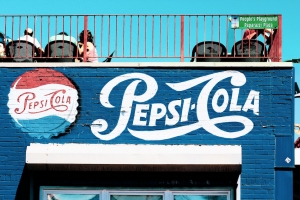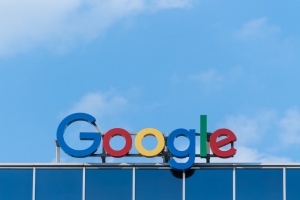
How Do You Know When to Rebrand vs Refresh?
Your company’s brand is the most powerful tool in your toolbelt. As businesses grow and adapt to a constantly-evolving world with new tastes, new innovations, and new customer demands, it’s essential for your brand to reflect the current marketplace, but how do you know if you should rebrand or just refresh?

Have you ever been on a jog or in a cycling class, and suddenly you have a really brilliant, creative idea? In addition to being physically fit, the effects of exercise on your mind are multi-faceted, and creativity is just one of the benefits.

Tell Your Story with a Case Study
Everyone has heard the saying, “a picture is worth a thousand words.” In marketing, the stories we share paint pictures and elicit emotions. This is exactly what a case study enables us to do-- tell stories about a brand using the customer’s voice.
Generally, there are three major components to a case study: the problem, different solutions available, and proven results that showcase your product/service as the ideal solution. Primarily, a strong case study highlights the question every consumer wants to know: “what’s in it for me?”.
6 Steps to Build a Case Study
1. Decide which project or campaign is worth developing into a case study. Typically, case studies hone in on a specific goal related to your product or service offering and, as a result, they resonate with your target audience.
2. Determine the purpose. Knowing the target audience and what questions they need answers to will drive the content and format.
3. Establish the example that best fits the goal. Consider a case study from a particularly compelling client and begin with a pre-interview with the client, if necessary, to learn more.
4. Assemble the basics. Core information should be quantifiable and factual. Use a journalistic approach when writing a case study, by learning what’s valuable to the reader and adapting the story to fit.
5. Develop in a compelling format. A well-written case study will only be persuasive if it’s visually appealing. Consider including visuals, video (if you have it) and a testimonial (again, if you have it). For a more relatable piece, quote your customer in their own words.
6. Promotion. Now that you have a shiny, new case study, the world needs to see it! The type of promotion you choose will depend on who you wrote the case study for and the stage they’re at in the buyer’s journey. For a broad reach, you can post the piece on your website, or incorporate it into lead nurture or social promotion to target leads.
In today’s competitive marketing environment, having robust case studies validate the value of your company and serve as powerful testimonials to prospects and leads. With quality content, you can demonstrate that you understand the problems faced by your buyer personas and how to solve them better than your competitors.

Thank You Marketing Eye
It is Friday, October 26 here in Sydney, Australia, and unfortunately for me, today marks the end of six weeks spent interning here at Marketing Eye. Looking back, I could not be more grateful for the opportunities that this company has offered me and the lessons that I have learned about marketing, social media, and the working world in general. I am sad to be leaving and know that come this time next week, I will be disappointed that this fantastic experience has come to an end.

6 Great Ideas for Corporate Holiday Gifts
The holidays can be a stressful time of the year for many in regards to figuring out what to buy as presents for coworkers. It is often up for debate as to what is considered an appropriate gift, and the goal of this blog is to provide you with a couple gift ideas that are always guaranteed to bring a smile to your coworkers faces regardless of who they are. The key to a corporate gift is finding something that is not inappropriately expensive, while at the same time not being so inexpensive that people will look upon you as being cheap. You also want your gift to be of value to whoever you are giving it to, so each gift should be able to appeal to a wide variety of people. A good gift is something that your coworker will actually use and hopefully will bring light to their life during the holidays. Here are 6 gifts that will surely fit all the characteristics of a good gift.

Biggest Marketing Failures in History
As a marketer, while it is important to take risks, you still need to be extremely careful when releasing an advertisement, as it is going to be seen by many people and result in how the public looks at your company. It is vital that you examine your advertisement and think of every possible way it may be perceived so you do not inadvertently harm your company with an offensive ad rather than benefit it through a creative, well thought out commercial. Unfortunately, many companies have released advertisements to the public that were not examined in such a way and resulted in uproar and offense to many people, or simply did far more harm to the company than good. Here are some of the greatest marketing failures in history.

My Most Memorable Advertisements
One of the characteristics of a truly great advertisement is its ability to stay on the mind of the consumer even after the advertisement has ended. In other words, how memorable it is. Everyone is exposed to hundreds of advertisements every single day, so the key to success is figuring out how to make your advertisement one of the few that stands out. If you can create a commercial that your targeted consumer continues to think about even after being exposed to it, then that advertisement is far more likely to succeed in conveying your message. These are some of my most memorable advertisements that have withstood the test of time and have stuck with me.

Make Your Bed Every Morning
There was a time in my life where I was a part of the unfortunate group of people who neglected to make their beds every morning. I would wake up, still half asleep with bags under my eyes, and would stay in bed as long as possible before having to leave, hitting snooze on my alarm over and over again and leaving me with no time for bed making. Trudging out of my bedroom in a similar fashion to a walking corpse, I would proceed through my day completely unmotivated, not ready to face any challenge that presented itself to me. This lifestyle took a 180 degree turn when one morning I decided to make my bed.

How Robotics is Changing Marketing
result, is becoming more and more prominent in every field of business, including
marketing. Humans still cannot even fathom the technological advancements that we will be
facing in the coming years, and as more growth occurs, as does its place in business.
Already, artificial intelligence is taking over the corporate world, and can be found in multiple
different work disciplines. Marketing is one of such disciplines that has taken advantage of
developments in artificial intelligence. Marketing Eye’s own Robotic Marketer has taken the
marketing business by storm and is continuing to lead to success.

As a business owner, you will be supervising a diverse group of employees that may all come from a large number of different backgrounds and religions. Consequently, you should be familiar with all the different religions of your employees as well as the different holidays and events that each religion celebrates. By familiarizing yourself, you will not be taken by surprise when an employee requests for a day off for religious purposes as well as be respectful to any employee when one of these events happens. Here are some of the main celebratory events for the four most popular religions that you will likely face as a business owner.


